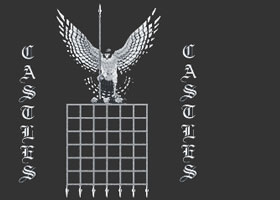Castle DrawbridgeCastle Drawbridge - What was the Origin, Meaning or Definition of the Castle Drawbridge
- Description of a castle Castle Drawbridge
- What was the purpose of the Castle Drawbridge and how did it help defenses?
- How did a Castle Drawbridge move?
The Castle Drawbridge - A Modern Bascule Bridge
The Drawbridge is now described as a Bascule type of bridge - a bascule bridge tilts upward to open. The drawbridge works by counterbalance so that when one end is lowered the other is raised - so that when one end is lowered the other is raised - the seesaw principle - moved by weights. Parts of a Medieval Drawbridge
Some of the working parts of a Medieval drawbridge are described as follows: - Rainures or Gaffs were the recesses for the counterbalance beams
- Trunnions were axles on which a drawbridge turned - one of a pair of projecting pivots
- Windlass was a mechanical device used to raise and lower the drawbridge
A late design of the Drawbridge combined its mechanism with that of the Portcullis - when the Portcullis was dropped the Drawbridge was automatically raised. The Drawbridge
The Drawbridge was introduced with Norman and Plantagenet castles during the Medieval period 1066 - 1485. The old Medieval Castles were a symbol of wealth and power and were often the centre of historic battles and Medieval sieges. These great old castles were built for Medieval warfare and defence and new parts of the castle were designed accordingly! This section of 'Castles' provides interesting facts and information about the many different parts of Castles! The Drawbridge was an essential Castle part as a form of defence against intruders. | 
